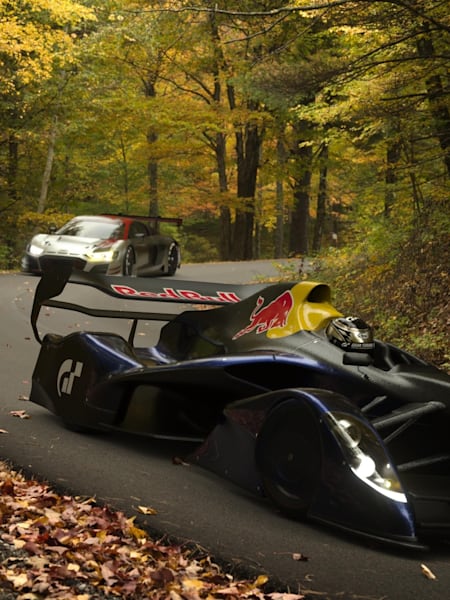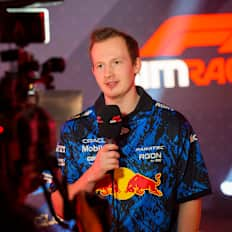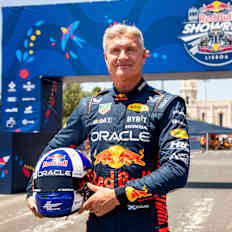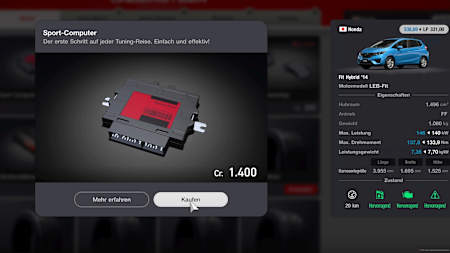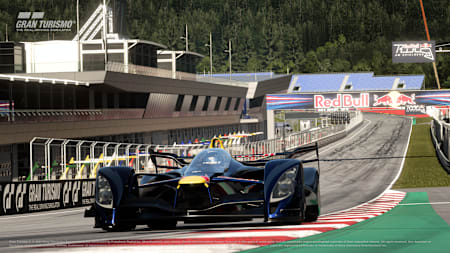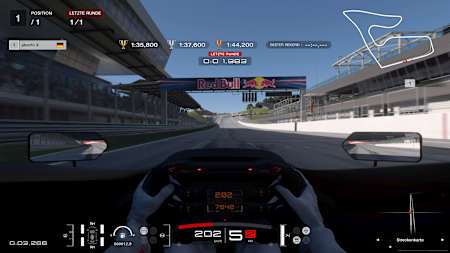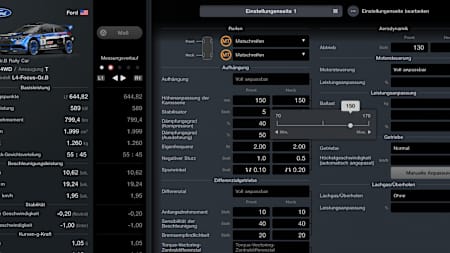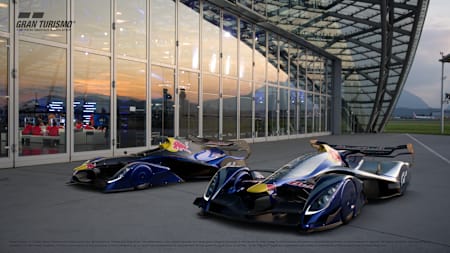Unlike its indirect predecessor in GT Sport, Gran Turismo 7 for the PlayStation 5 and PS4 lets you tune and upgrade the 420+ vehicle fleet to your heart’s content. But whether you’re trying to master the Career or be the next GT World Champion in Sport mode, there’s a lot to keep in mind when it comes to vehicle setup. Our Gran Turismo 7 setup and tuning guide will help you get to grips with car setup and let you focus on what is most important: the track.
01
The Right Parts
Gran Turismo 7 finally brings back the Tuning Shop and it’s more extensive than ever before. With more than 60 categories of parts from tires to nitrous, almost anything is possible.
Like most of Gran Turismo 7’s features, the Tuning Shop must be unlocked by playing through the campaign, or the “Café Menus”, which is GT7’s main progression system. You’ll unlock better and more expensive tuning options the farther you progress. These categories are Sports, Club Sports, Semi-Racing, Racing and Extreme. Performance parts have a direct effect on the PP (Performance Points) Brake pads, suspension or transmissions on the other hand do not. When starting out in GT7, make sure to focus on more than just horsepower. Make sure you supplement those extra horses with better brakes or better tires so you can stop and turn as well as blast down the straights.
02
Aerodynamics and Ride Height
Aerodynamics (downforce) play an enormous role in the handling characteristics of your vehicle in Gran Turismo 7. In order to adjust your downforce levels in GT7, you’ll have to install downforce-enabled tuning parts (such as a wing or a new front bumper with a splitter.)
You won't find these in the game's Tuning Shop but in GT Auto, the more ‘cosmetic’ location for vehicle customization..Navigate there to the Customization Parts category to install a front bumper and rear wing. Only then can you adjust the downforce in the car setup tab.
Higher downforce pushes your vehicle down onto the track resulting in more grip, better handling and faster cornering speeds. The trade-off however is you'll be slower on straight caused by the excess drag.
Ride height also has a direct effect on handling. Cars that are lower to the ground have a better grip on the track but also increases the risk of damage or unsettling the car when going over curbs.
Ride height and downforce should be adjusted individually for each track (and each car). A course like Special Stage Route X for example, which consists almost entirely of straights, requires hardly any downforce. On the Nürburgring Nordschleife, on the other hand, you should significantly increase the aerodynamics in order to be able to cope with the notoriously technical course.
03
Adjust the Traction Control
You can influence the cornering behaviour with the traction control.
© Sony Interactive Entertainment
The Traction Control System (TCS) is the only driving aid you can change while driving in Gran Turismo 7. This tool has an enormous impact on the car’s behavior while cornering.
A lower value (0-2) will allow you to power out of corners harder, improving acceleration and lowering lap time. However, you may find the car to be less stable on those corner exits because of wheelspin. If you trust your throttle control, experiment with lower settings or turning the assist off altogether.
A higher value (4 or more) will hinder your acceleration on corner exit, but will electronically limit wheelspin by limiting throttle input. While turning off TCS is faster, it can be useful when learning a new car or track. As said before you can adjust this during the race, turning it down as you get more confident or turning it up should the skies open and the track get slick.
Brake force distribution
04
Choosing the Right Tires
Just like in Formula 1, the choice of tire for your vehicle plays an important role in Gran Turismo 7. Tires are split into three categories (comfort, sport and race) and are available in different compounds racing from soft to hard.
- Comfort tires are what you’d find on a typical entry-level road car. Because of this, they fare well in both dry and wet conditions.
- Sport tires have less tread, which will improve grip on a dry track but at the cost of higher wear and less adaptability in the wet.
- Racing tires have no tread and are the classic slick tire you’re used to seeing on a racing car. It doesn’t take much rain to cause you to lose control with a slick tire, but if the sun is out this will be the fastest tire by far. There are also intermediate and wet racing tires that you can either pre-equip before a race, or swap out during a race should the conditions change (depending on the event).
The tire compound is equally as important. The softer the tire the more grip it will provide, but at the cost of it wearing much faster. The harder the tire the more durable the rubber but at the cost of outright corner speed. Medium tires fall somewhere in between, finding a balance for durability and grip. Factor in the race length when choosing the appropriate tire compound.
Rain and mud tires
05
Suspension and camber
To improve how your car drives in Gran Turismo 7, you should also adjust the suspension settings and wheel camber. You can do this in the car setup menu under the suspension tab. Softer suspension will soak up the bumps on a rougher track, but going with too low of a spring rate can affect the contact patch of your tires in specific corners (you want all four tires on the ground as much as possible). Stiffer suspension will increase control by improving stability, but set too stiff and your car will feel exactly that: stiff. You may find it hard to turn into a corner or worse, upset and thrown around by bumps and curbs.
Camber also plays a part in the handling of your cars. Camber is at what degree the tire is leaning forwards or backwards. Increasing negative camber (with the wheel leaning inward, towards the body of the car) will reduce the tire’s contact with the racing surface. However when turning, the cornering force will pull that tire upright. Tracks with more corners will normally benefit with more negative camber, but fast tracks like Le Mans will need much less. Experiment until you find something that works for your car, setup and driving style.
Automobile love: In the documentary 'Mechanics of Creativity' we accompany former Formula 1 superstar David Coulthard on his visit to Havana, Cuba. There he meets mechanics who are considered the most creative minds in the world.

23 min
Mechanics of Creativity
Formula One driver David Coulthard travels to Cuba, to drive in a race unlike any he's run before.
06
Following Performance Points Restrictions
In the later stages of Gran Turismo 7's career mode or in multiplayer races in Sport mode, you'll have to adhere to a certain PP (Performance Points) limit. The fastest cars in the game have a PP value of well over 1,000, but even production cars can be tuned to a value of 600 or more.
What are your options when an event has a maximum PP value of 300, 400 or 500? You can choose a weaker car, which is certainly the easiest of your choices. On the other hand, you can lower the PP value of a faster car. There are a number of ways to do this with tuning and car setup.
- Installing ballast: Put weights in the car, which lowers the PP value
- Power Restrictor: Reduces power output which in turn lowers PP value.
- Downforce: If you increase the rear downforce, the PP value decreases - even if only by a small number. The opposite applies at the front
- Tires: Use a harder compound, or switch to a lower grade of tire.
You can also reduce the PP value by using weaker tuning parts. Switching to a sports air filter will provide less power than the corresponding racing model. In the car setup menu you can choose between the different components you own for each specific vehicle.
f you buy more than one component, you can switch in the setup menu.
© Sony Interactive Entertainment
By pressing the triangle button you can preview values of your vehicle and see the difference in PP, horsepower, 0-100kmh times, top speed or braking distance.
Part of this story
